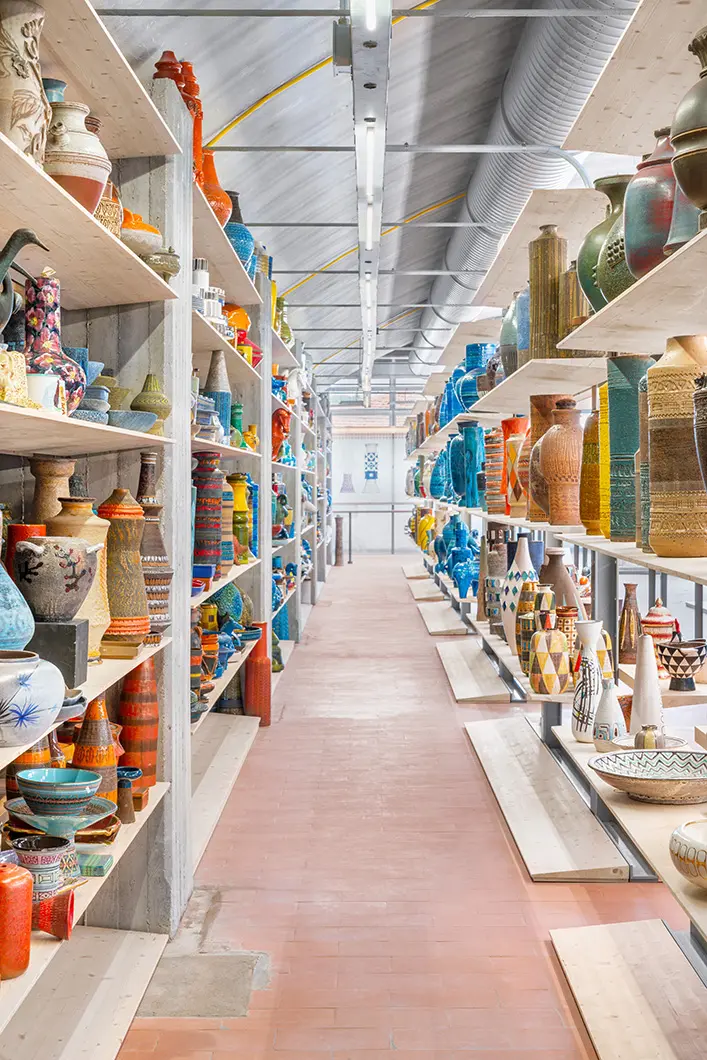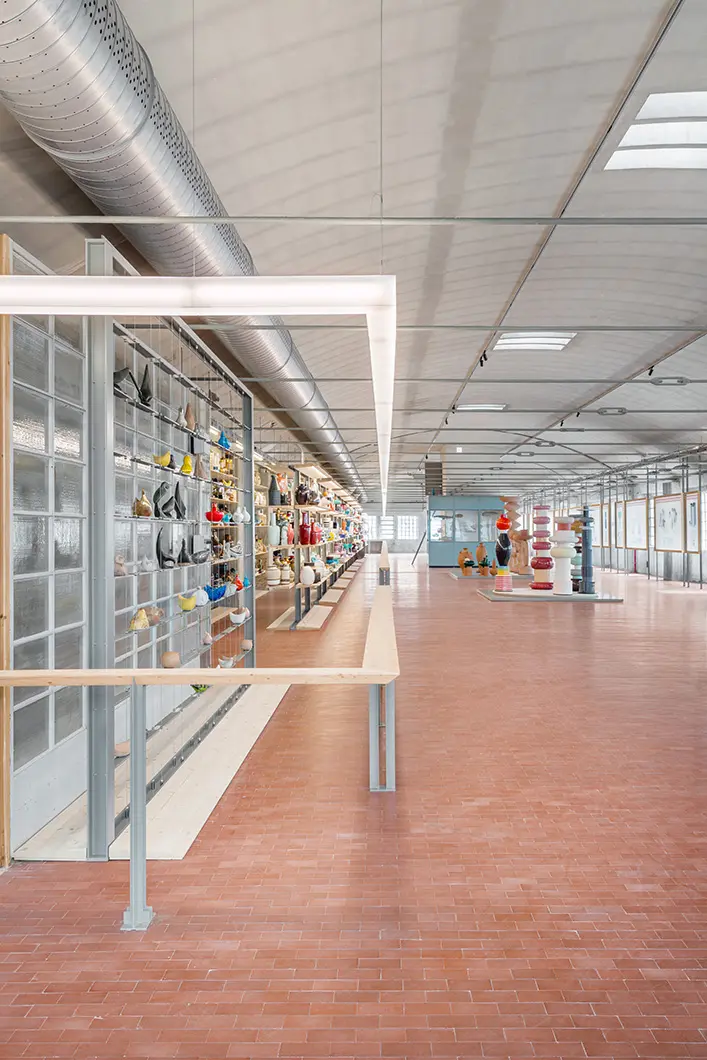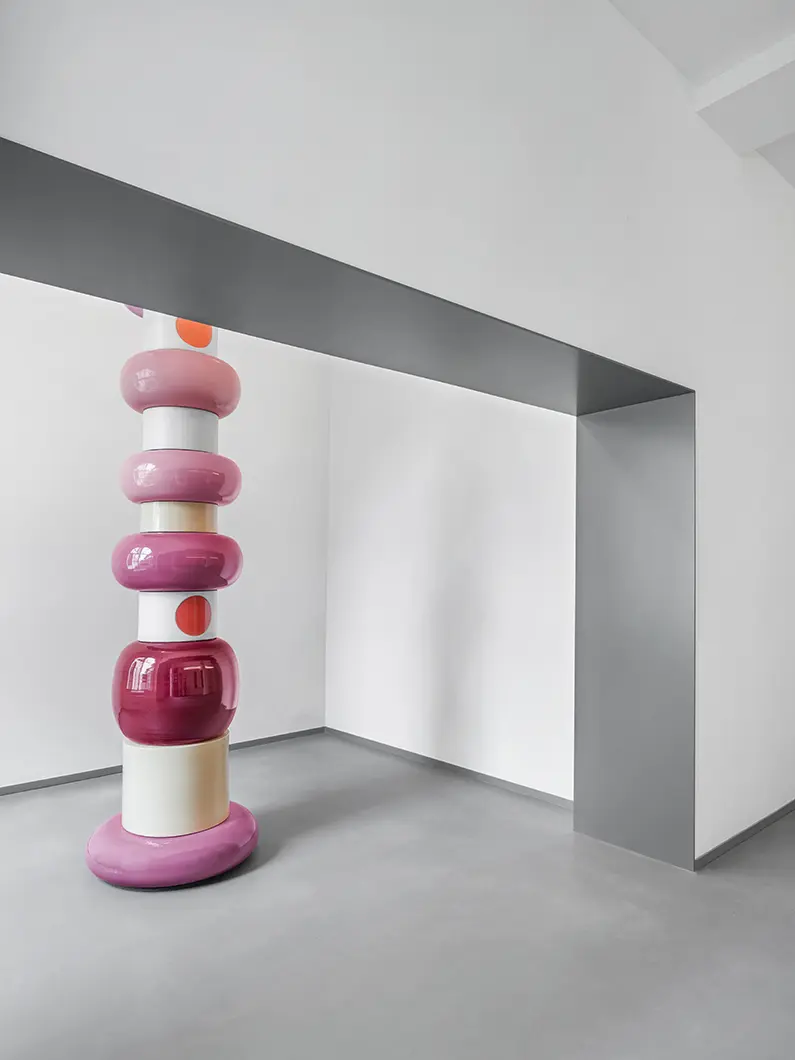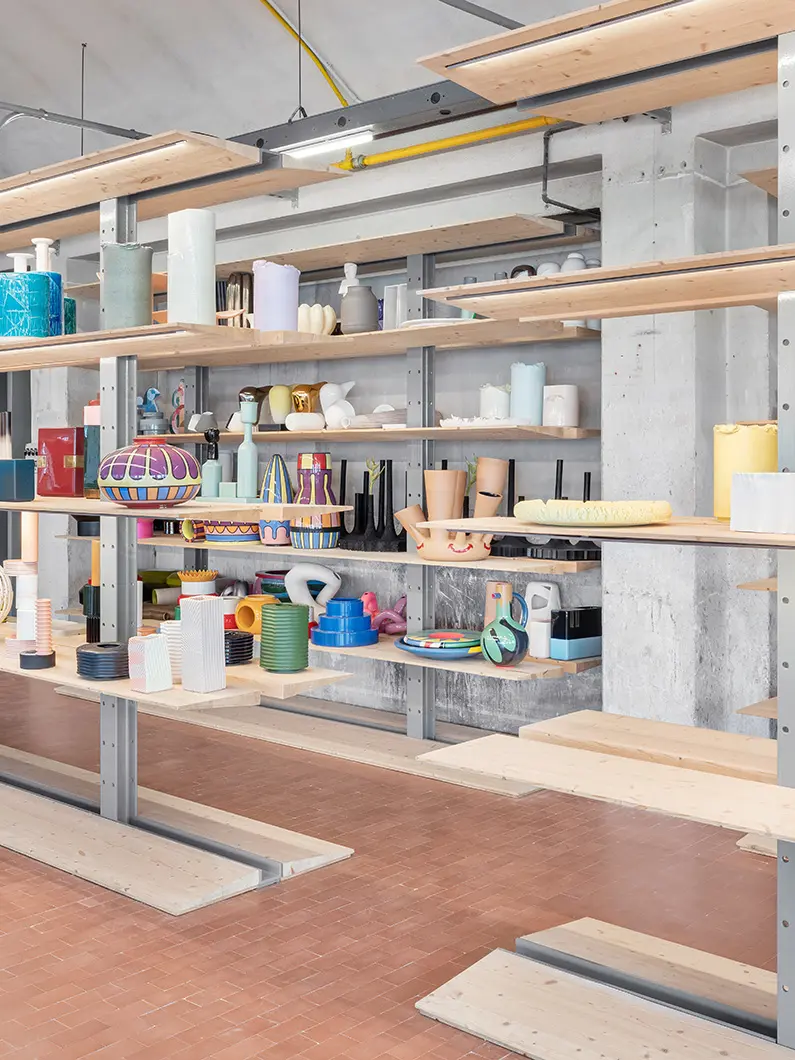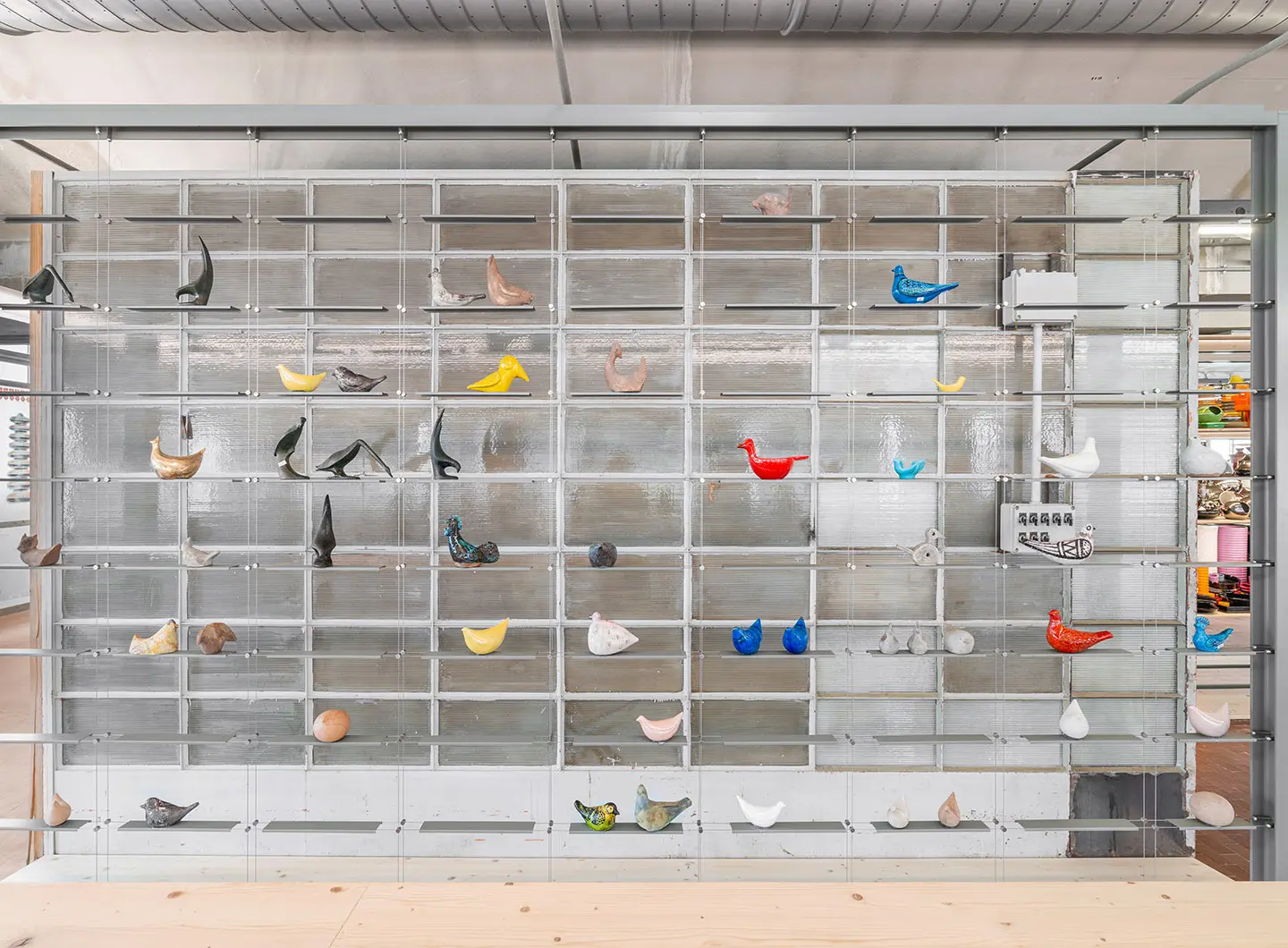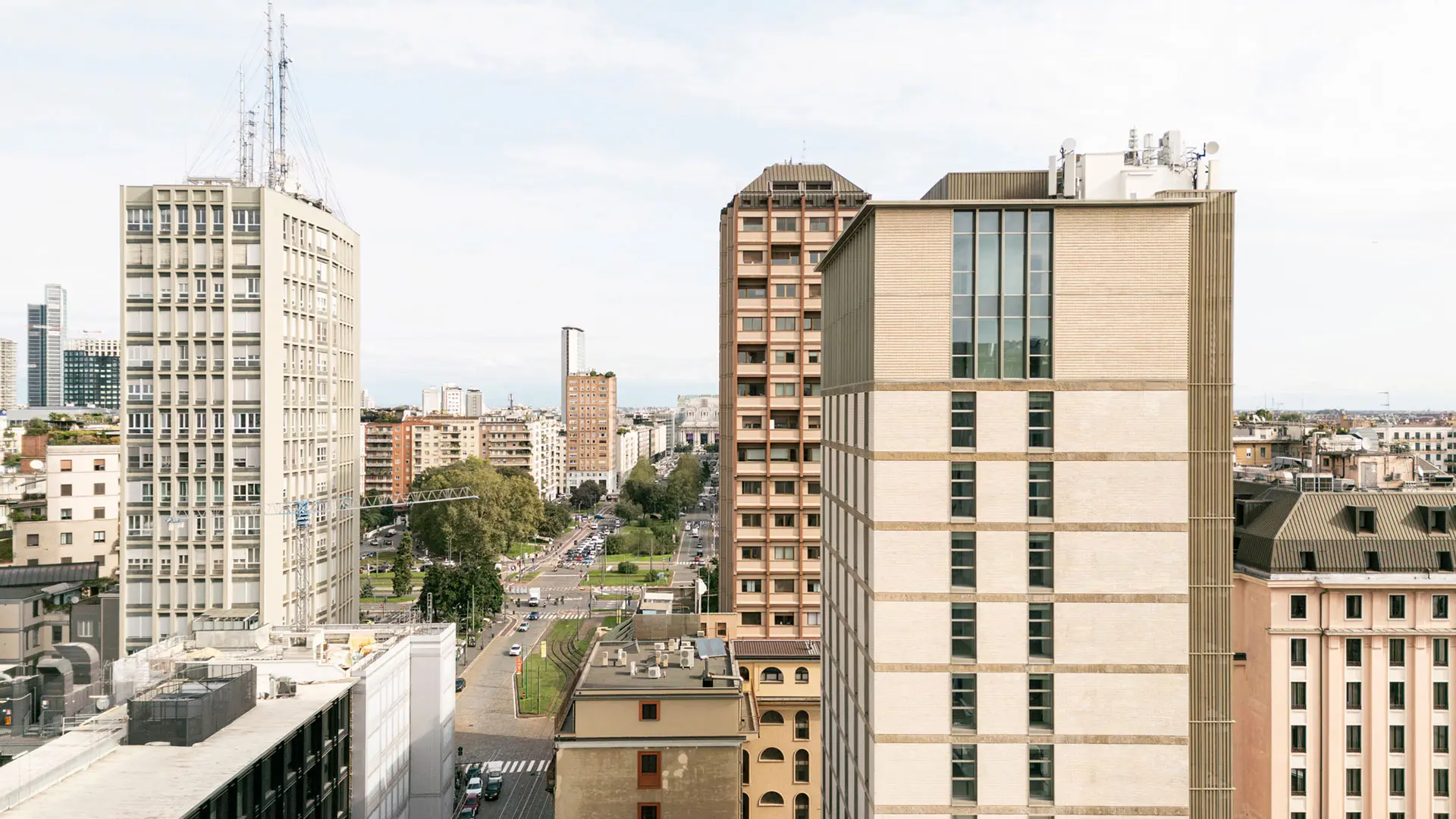In partnership with MiCodmc, a selection of establishments ripe for discovery during the 63rd edition of the Salone del Mobile.Milano, from 8th to 13th April
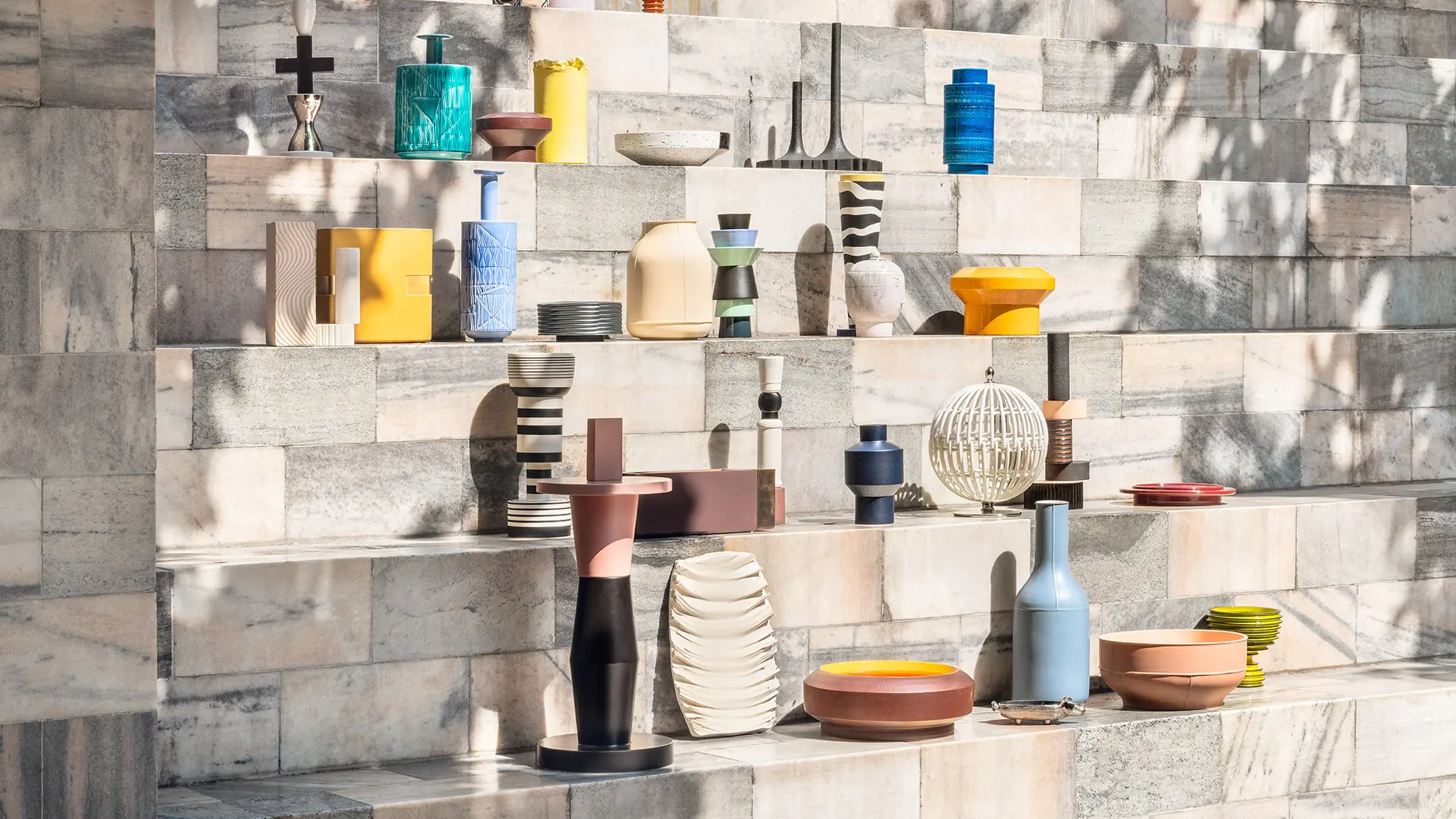
Bitossi. Ph. credits Delfino Sisto Legnani
A hundred years of history in seven thousand pieces… In a selection of plaster models and forms, work tools, photographs and paper documents including notebooks, sketches, and correspondence, the Vittoriano Bitossi Foundation has opened up its museum archives to the public in a 1500+ sq. m. space in Montelupo Fiorentino, in the company’s original building. Marking the hundredth anniversary of the company’s foundation, we bring you a group interview with curator Porzia Bergamasco, Luca Cipelletti who followed the architectural and museographic project, and the curator of the industrial archives, Marina Vignozzi Paszkowski.
PB: To arrange a corpus of pieces catalogued and archived by curator Marina Vignozzi Paszkowski and make it usable and accessible as an exhibition, we realized we needed to come up with a hybrid form, something between a museum and an archive. Previously located in a variety of non-public rooms, the first step was to find a way to display these items and tell the Bitossi story.
PB: We had to create a visual, morphological map highlighting the continuity and difference between all these products, supplemented by printed material such as drawings, sketches, catalogues, and orders. Our idea was to recount the variety of things Bitossi has made, presented as the end-product of new experimentation into materials, techniques and incredible colours, thanks to the genius of Aldo Londi, the shapes of Sottsass and Memphis, right down to the designers of today. In this chronology, it was important to note how and when contemporary design became part of the history of ceramic artefacts. The object, its history, its art and its soul, lies at the heart of it all, arousing amazement: how could you not fall in love with it all?

Marina Vignozzi Paszkowski / Porzia Bergamasco
MVP: The foundation’s number one purpose is historical scientific research into ceramic art and the chemicals industry, and its primary interest is to study and preserve the Bitossi Industrial Archives’ collections. The Foundation offers assistance, advice, and collaboration to scholars, researchers, collectors, and artists, and also takes part in cultural initiatives promoted by a variety of bodies and international public and private institutions. The story told by hundreds of artefacts and designs is a source of stimulus and inspiration to stay on the leading edge, to keep up research into the latest shapes and colours – an outlook that has always distinguished the company’s output.
MVP: I would say that for the most part, the archive consists of historical pieces that, although no longer in production, are part of the company’s “historical” back catalogue. To be precise, 70% are unique pieces relating to the period 1945-80, including extraordinary items like the animal figures made by Aldo Londi, lamp base vases and collections such as Capogrossi, Mondrian, modern Milan and icon in Rimini. The list is long indeed.
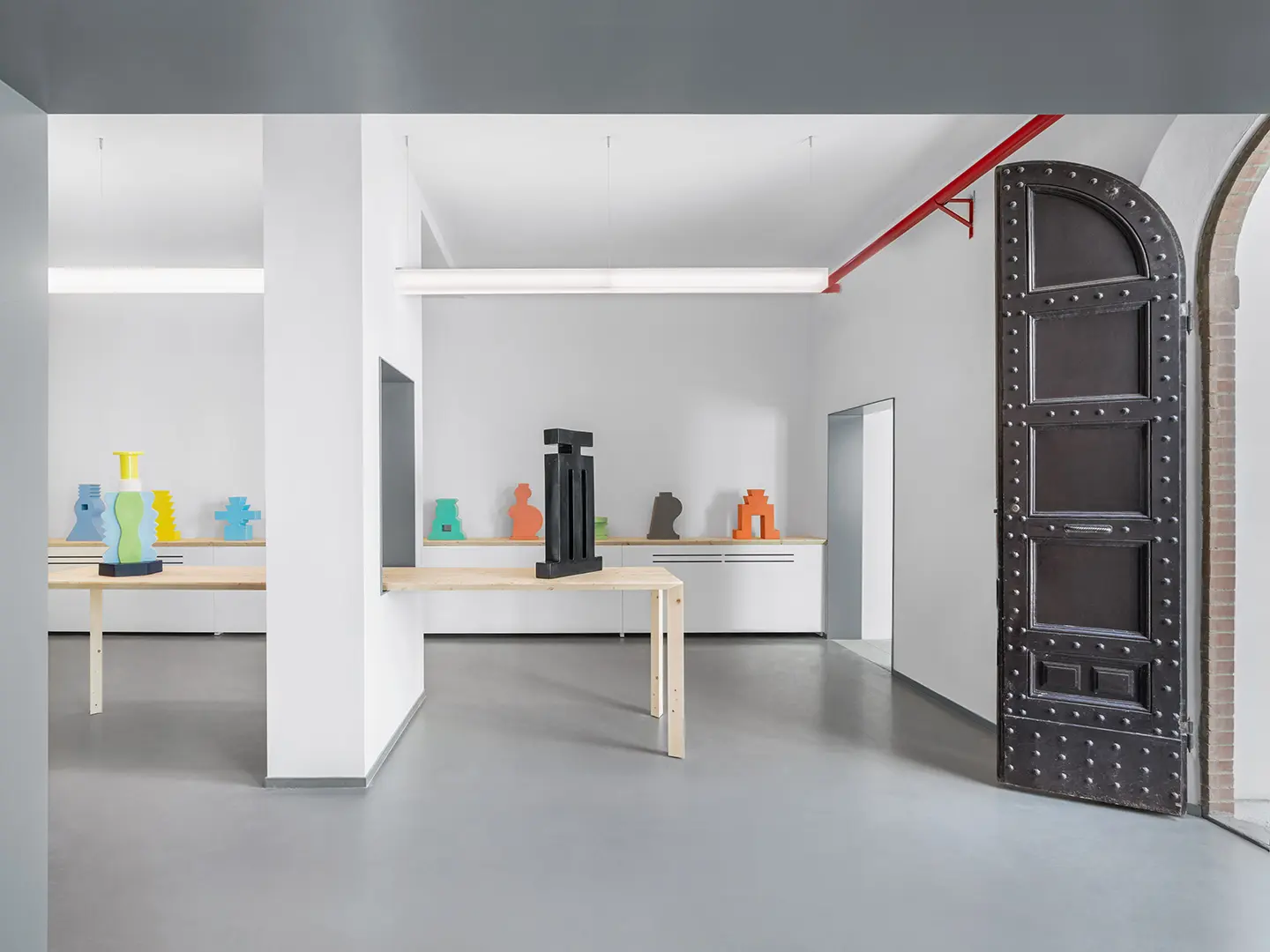
Bitossi, Historical Archive, Fondazione Vittoriano Bitossi. Ph. Credits Delfino Sisto Legnani, Agnese Bedini
LC: The layout was conceived to convert an archive of ceramics assembled as a “source” into a museum exhibition. Our goal was to make the Bitossi company’s entire heritage available to the public to see freely, turning it into a source of inspiration for professionals and creatives. We achieved this through a two-pronged arrangement of ceramics and paper documents, organizing more than 7000 pieces on fir wood shelving, a reinterpretation of the shelves we use on our production site. Centrally, we created unique installations dedicated to specific groups of ceramics; around the sides, there’s a design archive of sketches, drawings and photographs related to the history of ceramics and its techniques.
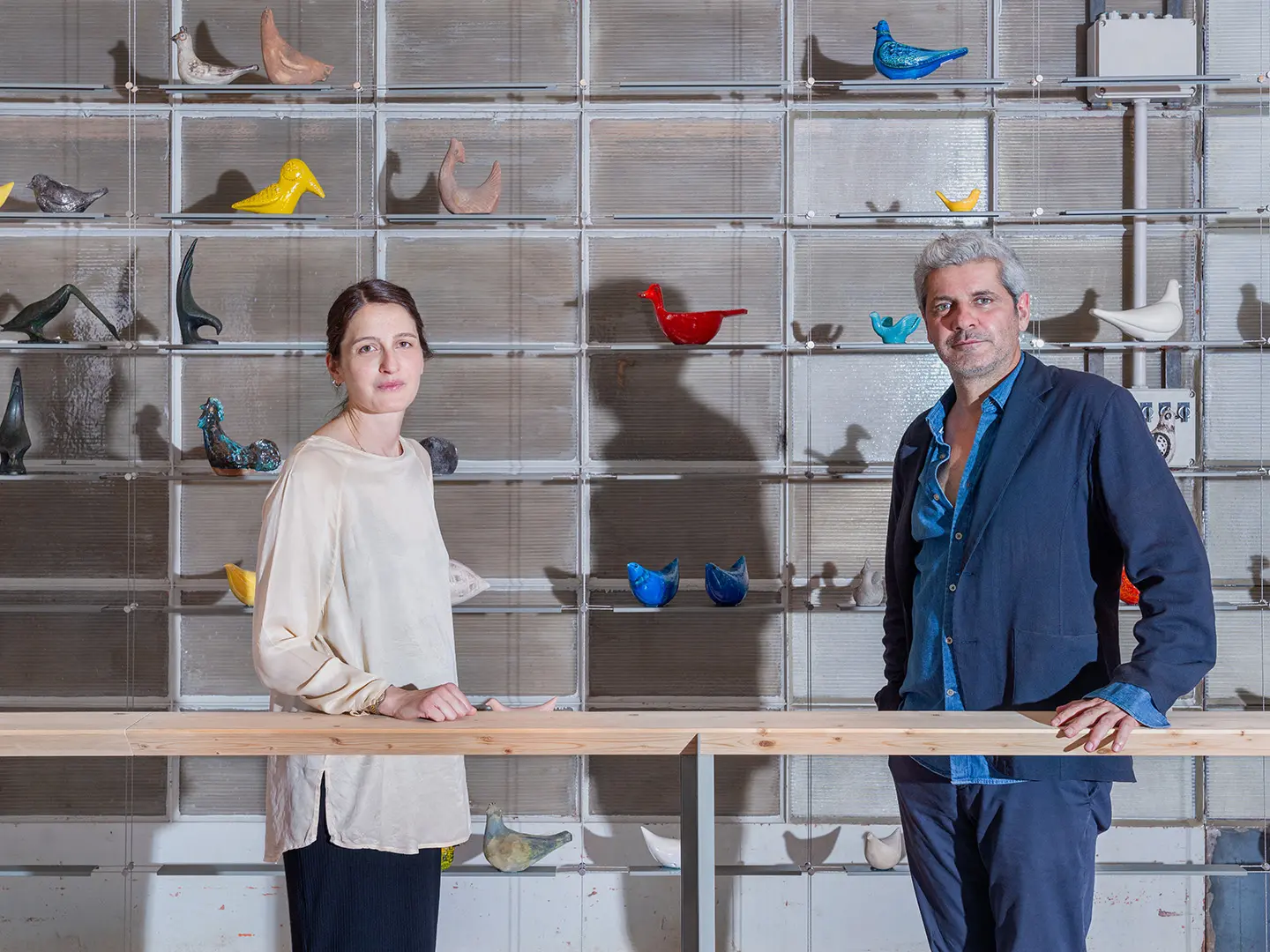
Bitossi, Historical Archive, Fondazione Vittoriano Bitossi. Ph. Credits Delfino Sisto Legnani, Agnese Bedini
LC: We chose to tell the evolutionary story of Bitossi Ceramiche not through a classic company museum, but by creating an archive/museum. We thought it would be more effective and stimulating to exhibit the company’s entire ceramic output, entrusting the story to the collection itself. This is why, following meticulous restoration of the old buildings, the museographic setting was layered over the historical memories of the industrial architecture where the ceramics were manufactured. Underpinning this approach is the idea that the modern day coexists with a nostalgia of place, and by so doing acts as a springboard towards the future. Indeed, the museum tour ends with an empty space, which we’ve earmarked for upcoming Bitossi Ceramiche collaborations.

In memoriam: David Lynch
The American director has left us at the age of 78. The Salone del Mobile.Milano had the honor of working with him during its 62nd edition, hosting his immersive installation titled “A Thinking Room”. An extraordinary journey into the depths of the mind and feelings. His vision will continue to be a source of inspiration.



 Salone Selection
Salone Selection
